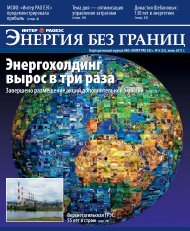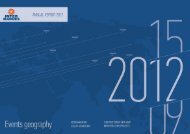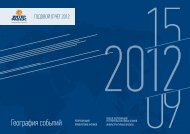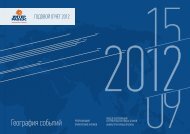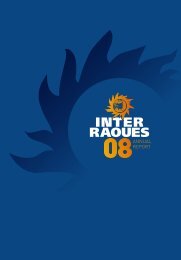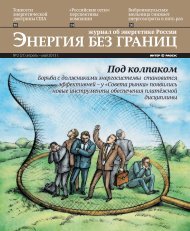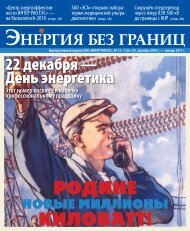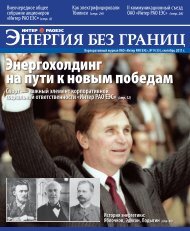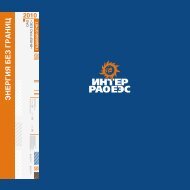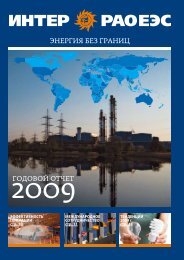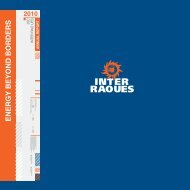ÐÑдиÑоÑÑкое заклÑÑение
ÐÑдиÑоÑÑкое заклÑÑение
ÐÑдиÑоÑÑкое заклÑÑение
You also want an ePaper? Increase the reach of your titles
YUMPU automatically turns print PDFs into web optimized ePapers that Google loves.
EXPLANATIONS<br />
to the accounting (financial) statements of<br />
JSC “INTER RAO UES” for the year 2012<br />
Used for the organization’s administrative needs.<br />
Inventories are evaluated in the sum of actual costs of purchase (manufacture) thereof. If the cost of<br />
materials is reduced, the Company shall create a provision for depreciation. Provision is calculated<br />
using the method that implies determination of the market value (possible selling price) of low-rotation<br />
inventories, except for inventories included in the following groups:<br />
Materials transferred for processing<br />
Special equipment and special clothing in use.<br />
Rotation is considered to be low if the sum of write-offs for inventory costs during the period of report<br />
makes less than 5 % of their book value at the beginning of the year of report. The sum of reserve is<br />
accounted in the structure of other expenses. In the year of report the Company did not create a<br />
provision for depreciation of materials.<br />
Evaluation of inventories upon their retirement is carried out:<br />
By actual net value of each item - for writing off the goods for re-sale (purchased electricity<br />
(power));<br />
According to a FIFO method – for all other inventories.<br />
Inventories acquired for construction, modernization or reconstruction of fixed assets objects are<br />
reflected on the balance sheet in Non-current assets section on the line ―Other non-current assets‖. All<br />
the rest of inventories are reflected on the balance sheet in the structure of current assets.<br />
Receivables<br />
Accounts receivable from buyers and customers have been determined based on the prices fixed by<br />
agreements between the Company and buyers (customers), taking into account all discounts<br />
(surcharges) provided/charged by the Company, VAT and prices as established under the contract.<br />
Receivables repayable (payable) within 12 months after the reporting date are reflected on the balance<br />
sheet in the structure of current assets. Receivables repayable (payable) within more than 12 months<br />
after the reporting date are reflected on the balance sheet in Non-current assets section on the line<br />
―Other non-current assets‖.<br />
21



